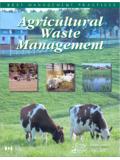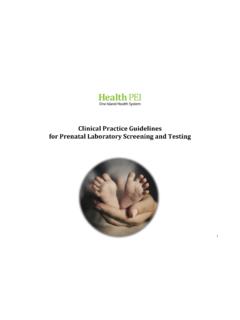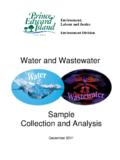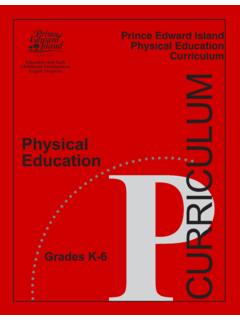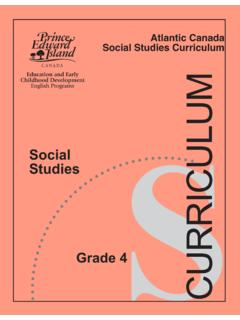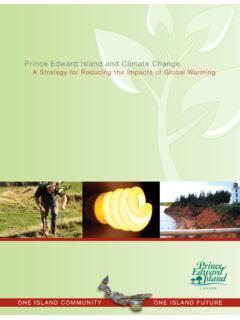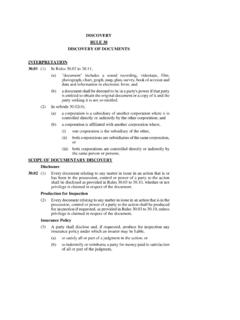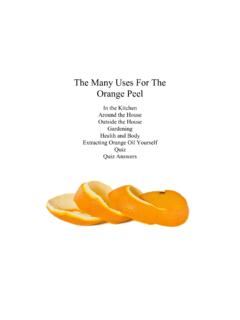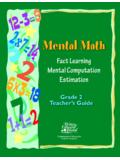Transcription of Harmonized Sales Tax (HST) - Prince Edward Island
1 1 Harmonized Sales Tax (HST) Prince Edward Island will implement a Harmonized Sales tax (HST), effective April 1, combined HST rate will be 14%. The provincial rate will be 9% plus the federal rate of 5%. Harmonizing the Sales tax will make PEI more competitive and attract more investment and jobs. It will also help to protect important public services like health care and was not willing to commit to harmonization until it could be sure that low and modest income Islanders were protected from potential impacts.
2 Low and modest income households are on average protected from tax increases, as a result of the introduction of HST. This is achieved through mitigation initiatives including a reduction in the base consumption tax rate on PEI from to 14%, point of sale rebate on heating oil, children s clothing, children s footwear, and books as well as the creation of the Prince Edward Island Sales Tax Credit (PEISTC) rebate Revenue Tax (PST) PST is the 10% retail Sales tax added at the point of sale, and applied after the GST is added to the price.
3 PEI has had a Provincial Sales Tax since 1960. PST is also levied on business purchases and this cost becomes factored into the price of goods and services. There are certain PST exemptions or refunds. Some of these include clothing and footwear, electricity and heating oil, as well as items for farmers, fi shers, aquaculturists and silverculturists. Under PST there are no input tax credits for businesses and no tax credits for lower income individuals and and Services Tax (GST) GST is the federal Goods and Service Tax of 5% levied on goods or services purchased in Canada.
4 It was implemented in 1991. Businesses that purchase goods and services that are consumed, used or supplied in the course of their commercial activities can claim input tax Sales Tax (HST) HST is the combination of GST and the PST into a single value added Sales tax. HST is now in fi ve provinces Ontario, New Brunswick, Newfoundland and Labrador, British 2 Columbia and Nova Scotia. It is collected by the Canada Revenue Agency on behalf of the participating provinces. The HST may differ across provinces, as each province will set its own provincial rate within the HST.
5 The introduction of HST changes Sales tax from a cascading tax system, which has been abandoned by most economies throughout the world, to a value added tax like the GST. A cascading tax is a tax that is applied at every stage in the supply chain, without any deduction for the tax paid at earlier stages. A value added tax is a broad-based tax on Sales , with systematic crediting of tax paid on inputs. Value added taxes are the modern way to raise revenue from consumer consumption, and this form of taxation is used by 29 of 30 advanced countries.
6 HST generally eliminates hidden PST because most Sales taxes paid on what a business uses in the creation of a product or service for sale, is refunded to the business through input tax credits . These tax credits are savings for the business that can be passed on to consumers through lower and non-taxble items Harmonizing at a 9% provincial rate will result in a decrease of percentage points of tax on goods and services currently subject to the PST. The significant majority of consumer expenditures will not have a new tax.
7 The tax on some goods and services currently not subject to the PST will rise. There will be no change in the provincial tax on heating oil, children s clothing, children s footwear and books. Under the HST, with a provincial rate of 9% along with point-of-sale rebate of the provincial component of the HST on heating oil, children s clothing, children s footwear, books and rebates to low and modest income households - on average, low income and modest households will not see an increase in the amount of tax the pay as a result of the implementation of the HST.
8 When Ontario introduced the HST in 2010, 83% of consumer items saw no new tax and the price of 17% of items went readiness Businesses currently registered for the GST will automatically be registered for the HST. The same rules for administration of GST will apply to the new HST. Businesses who are collecting and remitting GST are well on the way to being ready for HST. As part of the process to implement HST, information sessions were offered to businesses to assist in their is a tax administered by the federal government through the Canada Revenue Agency.
9 If you have specific questions on how the HST applies to your business or whether a good or service is taxable under the HST, you can contact them at 1-800-959-5525 for assistance.
